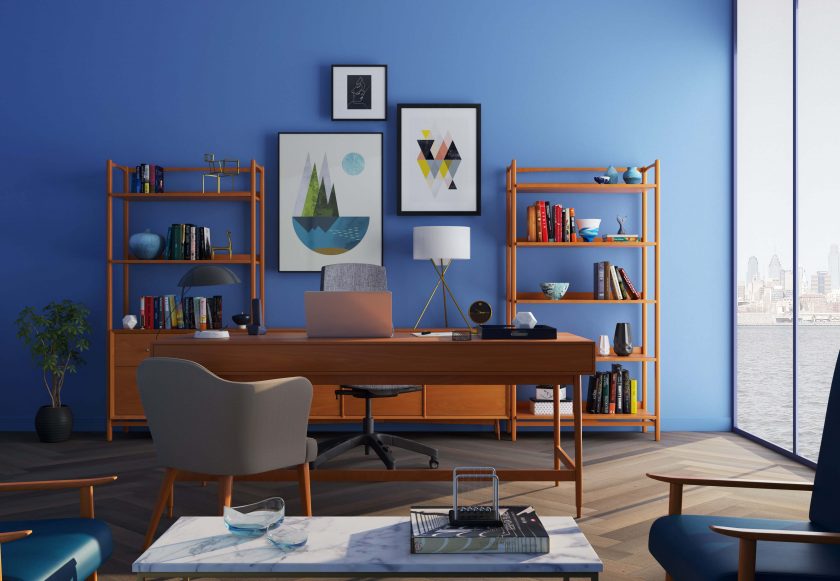Working from Home Solutions
June 2020Simple ergonomics to improve your working day
Better design improves productivity in the workplace by allowing for better concentration, while removing the likelihood of aches and strains and enhancing wellbeing, along with performance.
This is relatable wherever you happen to be working. With home posing as the workplace for many right now, the same rules apply. The challenge is to optimize your surrounds.
The importance of good design
Take note of your surroundings and where you are working right now. Comfort impacts on outcomes. Whether this is improving the quality of your work or improving your mood, both will be reflected in your overall productivity.
Working from home can present a variety of challenges as the space we are working in hasn’t necessarily been designed with work in mind (unless you’re lucky enough to have a home office). Ultimately, how we interact with our environment and the products in it, allows us to flourish and improve.
In the first instance, it’s important to get key objects like the seating and desk right.
Realising what makes us feel better
Often, we don’t even realise what makes us sore.
Our bodies are conditioned to choose positions that are easy and don’t hurt. However, we all have different tolerances. Some people can sit badly for a long time without it causing any pain while for others it can happen a lot more quickly.
So much can be improved with better posture, breathing and movement. If we are mindful and conscious about small changes to sitting posture and standing posture, we stand a better chance of improving our overall health.
By enforcing these good habits, we can gradually make them unconscious decisions which will help us, regardless of our environment.
Sitting pretty
Chairs are often cited as the most important element of the mix in the workplace. Sitting, in general, has had a bad rap for some time. The trend for standing desks was prompted by a raised awareness for the health issues associated with being seated for too long.
Generally, movement, regular breaks and exercise are all common sense activities to counter the negativity of being seated however, when we do sit, it’s worth considering the chairs we are choosing.
When looking at any sort of office / work chair, you need to assess for features, including height, seat depth, armrest and lumbar adjustment along with control of movement.
Desks aren’t generally as easy to manipulate and alter. While working from home, make sure the surface you have chosen to work on feels most comfortable height-wise for you. It should allow you to look at your screen without having to drop your neck or slouch. Resist working on the sofa or bed and keep the screen at arm’s length to alleviate the risks of strains or soreness.
Standing tall
And remember, put as much movement into your day as possible.
Own your posture. When you sit, when you stand, and when you move about, be aware of how you’re holding your body. It’s the first thing you can change so take control and make it work for you.
